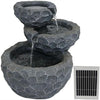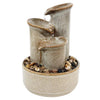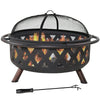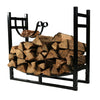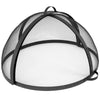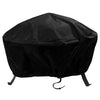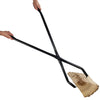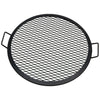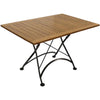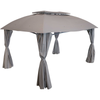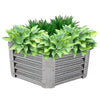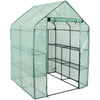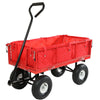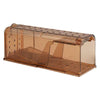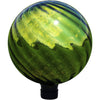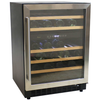For many parts of the country, fall is the time when gardeners reap the benefits for their hard work and harvest their crops, signaling the end of another successful growing season. However, if you’re not ready to hang up the gardening gloves yet, there are still plenty of vegetables that you can plant, even if you live in a state where winter is right around the corner. Thanks to a process called “overwintering” you can keep on growing, and better yet, stock up on fresh produce in the spring. This article will show you how.
What is “Overwintering” ?
Some parts of the country are blessed with mild weather all year-round, but that is not the case for many parts of the Midwest, including our home state of Wisconsin. When the temperatures begin to dip, gardeners begin to take measures to help their plants weather the winter. This process is called “overwintering”. This typically involves mulching, covering garden beds with tarps, using cold frames and greenhouses, and bringing non-hardy plants indoors to grow in planters. For more advice on how to prepare your garden beds for winter, check out the How to Winterize Raised Garden Beds at the End of the Season blog.
Overwintering can be done to protect plants and flowers until next spring, but it can also be implemented to plant hardy vegetables, allow them to go dormant during the winter and then harvest them once the snow begins to melt away. In fact, some vegetables actually grow better if they experience a period of cool weather.
What Vegetables are Best for Overwintering?
It’s important to choose the right vegetables for overwintering. Fortunately, there are a wide variety of hardy plants to choose from.
1. Kale

When it comes to vegetables that like cold weather, kale is king. This hardy lettuce is one of the best vegetables to overwinter. In fact, this plant can even be planted after the first frost and harvested throughout the winter right up to spring for fresh produce year-long. The cold actually helps improve the flavor of the leaves. All they need for winter protection is a layer of mulch on top.
2. Spring Onions and Shallots

Onions are typically a slow-growing vegetable which makes them the perfect option for winter. For the best results, plant onions in the fall before the first frost. Onions require a significant amount of time to develop their roots, but require very little expertise to plant. All you need to do is plant them and wait. In fact, apart from adding some fertilizer and mulch you can pretty much forget these until it’s time to harvest in summer. Don’t worry, these plants are incredibly hardy and able to withstand most temperatures.
3. Garlic

Another vegetable that does very well during the winter is a cousin of the onion, garlic. Both garlic and onion are members of the allium family, and like onions, they also have a long growing season. The best time to plant garlic for most areas is late September because it gives it all the time they need to grow for a summer harvest. Garlic also requires well-drained soil and a 6” to 8” layer of mulch to protect them from the frost. Because of this, it is best to plant them in a raised garden bed.
4. Carrots

Carrots are hardy root vegetables that can grow during many seasons, including fall. When it comes to planting carrots, it is best to plant the seeds in light, sandy loam soil during early fall. The carrots will do most of their growing during the autumn season while the soil is still relatively warm. Adding mulch will also protect them from frost. Your carrots should be ready to harvest in the spring.
5. Turnips

Today turnips are a rather obscure vegetable choice, but at one point these root vegetables were an important staple of people’s diets. People depended on turnips because they were so hardy they could grow at any time to feed their families and livestock. Plus, turnips are also full of nutritious goodness and can be steamed, roasted, mashed, or used in soups. Like carrots, they should be planted during early fall in order to establish their roots right away.
6. Asparagus

Asparagus is another tasty autumn vegetable, however this vegetable does require a bit more patience. Unlike other vegetables asparagus cannot be harvested right away. Asparagus needs approximately 2 to 3 years to establish itself before you can harvest it for the first time. Don’t worry! Asparagus is worth the wait, and these perennial plants can last for decades, providing a dependable stock of spring produce.
7. Brussel Sprouts

Brussel sprouts love the cold. In fact, they are not a fan of heat, making fall an ideal time for planting. Plus winter-grown Brussel sprouts often taste sweeter than their warmer weather counterparts because they use sugar to protect against frost. Brussel sprouts can even be harvested during the winter for some much-needed winter produce.
8. Beets

Just like Brussel sprouts, winter-grown beets are a sweet treat that can be harvested throughout the winter and early spring. They are great for winter salads and can be pickled and canned for later consumption. Beets also thrive in similar conditions as carrots with fluffy, loamy soil and a top layer of mulch for extra protection.
Just because cold weather is on its way, doesn’t mean that gardening has to grind to a halt. With plenty of cold-loving vegetables to choose from, you are sure to enjoy salads, soups, and roasted veggies all-year long and have some fresh produce to look forward to when spring finally arrives.

